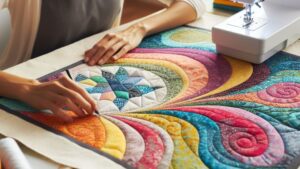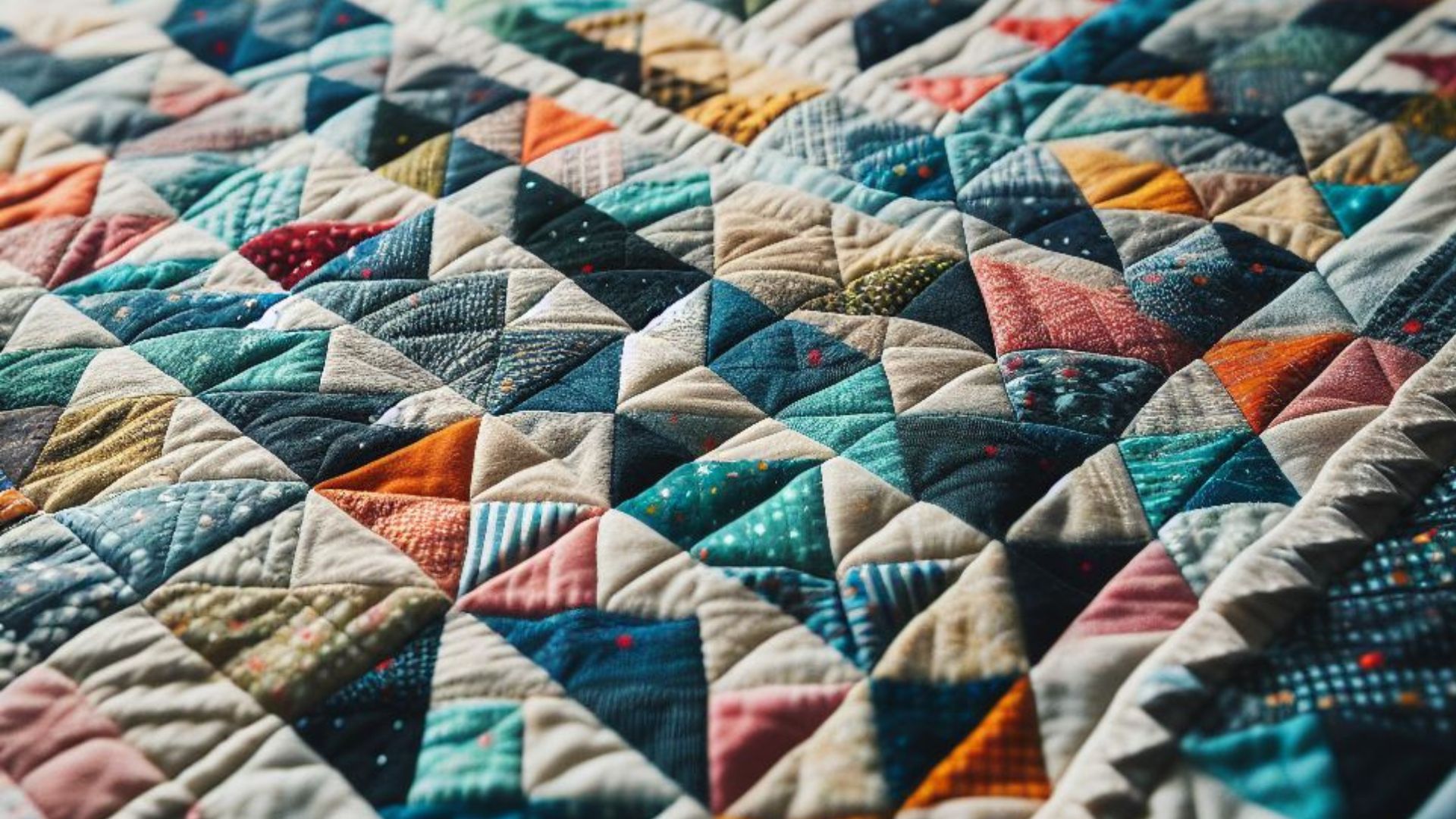Quilting is an art form that combines creativity, precision, and a touch of practicality. One common debate among quilters revolves around whether to prewash fabric before starting a new quilt project. Let’s delve into this discussion and explore the pros and cons, helping you make an informed decision that suits your quilting style.
Why Prewash Fabric?
Prewashing involves laundering your fabric before cutting and piecing it together for your quilt. Here are a few reasons why some quilters prefer this approach:
- Color Bleeding Prevention: Some fabrics, especially those with strong dyes, might bleed when washed later. Prewashing helps prevent bleeding that could potentially ruin your finished quilt.
- Shrinkage Control: Fabrics often shrink after the first wash. Prewashing can eliminate this shrinkage, ensuring your quilt retains its shape after completion.
- Removing Chemicals and Sizing: Washing fabric before quilting removes any chemicals, residues, or sizing agents applied during manufacturing, making the fabric softer and more pliable.

-quilt-curves-without-puckering
Reasons Against Prewashing
However, not all quilters opt for this step, and here’s why:
- Preserving Fabric’s Original Feel: Some quilters prefer the crispness and texture of unwashed fabric, believing that washing can alter its original feel and appearance.
- Ease of Cutting and Piecing: Unwashed fabric tends to be more stable and easier to work with, especially for intricate piecing or smaller blocks.
- Quilting Aftercare: If the quilt will be used and laundered frequently, skipping prewashing might ensure consistent shrinkage for a more authentic, vintage look over time.
Considerations Before Deciding
Before making your decision, consider the following factors:
- Fabric Type: Natural fibers like cotton tend to shrink more than synthetic ones. Knowing your fabric content helps determine whether prewashing is necessary.
- Quilt Intended Use: Is it a decorative piece or an everyday quilt? Understanding its purpose can guide your decision on prewashing.
- Personal Preference: Your comfort level and quilting style should also influence your choice. Experimenting with small swatches or scraps can help you gauge the impact of prewashing on your specific project.
So,…
Whether to prewash fabric before quilting is a personal choice. Some quilters always prewash, while others never do. There’s no right or wrong approach; it’s about what works best for you and your project. Consider the fabric type, intended use, and your preferences to make an informed decision that ensures a beautiful and enduring quilt.
Remember, the joy of quilting lies in the process as much as the final product. Experimentation and finding your unique style make quilting an endlessly rewarding endeavor.
External Resources:
For further insights into fabric care and quilting techniques, check out these resources:
The Art of Prewashing: Tips and Techniques
Now that we’ve explored the debate on whether to prewash fabric before quilting, let’s dive deeper into the process itself, addressing common queries and providing valuable tips for a seamless prewashing experience.
How to Prewash Fabric
- Sorting Fabrics: Sort your fabrics based on color and type. Washing darker colors separately prevents bleeding onto lighter fabrics.
- Selecting the Right Cycle: Use a gentle cycle with cold water and mild detergent to prevent harsh agitation that might damage the fabric.
- Handling Fraying Edges: Consider pinking shears or serging the edges to prevent excessive fraying during the wash.
- Drying Methods: Air drying or tumble drying on a low heat setting are preferable to prevent excessive shrinkage.
Choosing When to Prewash
While some fabrics, especially vibrant or deeply dyed ones, benefit from prewashing, others might not necessarily require it. Here’s a quick guide:
- Solid Colors: Prewashing can help prevent bleeding, ensuring your colors stay vibrant and sharp.
- Prints and Batiks: These fabrics often undergo special dyeing processes that make bleeding less likely. However, if you’re unsure, a color catcher sheet in the wash can be a safeguard.
Exceptions to Prewashing
Certain situations might warrant exceptions to the prewashing rule:
- Precuts: Charm packs, jelly rolls, and layer cakes often come pre-cut and might not be prewashed. Consider the intended use before deciding to prewash these precuts.
- Quilt Kits: Fabrics provided in a quilt kit are usually coordinated and might not require prewashing, as they are intended to be used together.
Wrinkles and Ironing
After prewashing, fabrics might emerge slightly wrinkled. Ironing them while they’re slightly damp can make this task easier. Use a low heat setting to avoid damaging the fabric.
Final Considerations
Remember, prewashing fabric is not mandatory in quilting. It’s a choice based on personal preference and project requirements. Be consistent: if you choose to prewash one fabric, do the same for all fabrics to maintain consistency in shrinkage.
Conclusion
Prewashing fabric before quilting remains a topic of discussion among quilters. While some swear by this step for color preservation and shrinkage control, others prefer the convenience and original texture of unwashed fabric. There’s no one-size-fits-all answer; it’s about understanding your fabric, your project, and your personal style.
Embrace experimentation and find what works best for you. The beauty of quilting lies not only in the final masterpiece but also in the journey, the learning, and the joy of creating something unique.
Explore, experiment, and quilt away with confidence!
External Resources:
For detailed instructions and additional insights into prewashing fabrics, here are a few resources:
- The Spruce Crafts – Quilting Fabric Care Tips
- National Quilters Circle – Washing Quilt Fabric
- Quilting Daily – Preparing Fabric for Quilting
Comparison tabular
This comparison table succinctly showcase the differences between prewashing and not prewashing fabric before quilting. Here’s a simple comparison table:
| Aspect | Prewashing Fabric | Not Prewashing Fabric |
|---|---|---|
| Color Bleeding | Helps prevent bleeding, preserving colors | May risk bleeding, affecting fabric appearance |
| Shrinkage Control | Controls/prevents shrinkage | Fabric might shrink after quilting |
| Fabric Feel | Softens fabric, removes stiffness | Retains original crispness and texture |
| Ease of Handling | May cause fraying, needs additional care | More stable, easier to handle |
| Quilt Appearance | Ensures consistent look over time | May result in a more vintage appearance |
| Project Time | Additional time for prewashing process | Saves time in skipping prewashing step |
| Personal Preference | Dependent on quilter’s choice | Dependent on quilter’s choice |
This table offers a quick comparison, highlighting the key factors influencing the decision to prewash or not prewash fabric before quilting.
Wrapping up
The decision to prewash fabric is a choice that holds both practical considerations and personal preferences. It’s a topic where there’s no definitive right or wrong approach; rather, it’s about what aligns best with your quilting style, project requirements, and desired outcome.
Prewashing fabric can offer benefits like color preservation and shrinkage control, ensuring your quilt maintains its appearance and shape over time. On the other hand, skipping this step might retain the fabric’s original texture and ease of handling, lending a vintage touch to your creation.
Embrace this decision-making process as part of the creative journey in quilting. Experiment, explore, and trust your instincts. Whether you decide to prewash or not, remember that the beauty of quilting lies not just in the finished quilt but also in the joy of crafting something truly unique.
Happy quilting, and may each stitch bring you joy and satisfaction in creating something wonderful!

For over a decade, I’ve been Mike, an artist, crafter, and designer deeply immersed in the Croc world. I thrive on crafting unique, size-inclusive patterns, fostering creativity, and sharing them on ktforum.com. My designs aim to ignite your creative spark and delight you, ensuring clarity and ease of use through rigorous testing. Join me in expressing your creative flair and showcasing your craft with joy.
Related Posts
- Quilting with Flannel Fabric: Your Comprehensive Guide
Quilting is a beautiful craft that allows you to create cozy, functional, and artistic pieces.…
- Mastering Fabric Yardage Calculation for Quilting: Your Comprehensive Guide
Quilting is a delightful craft, but getting the fabric yardage right can be a puzzle.…
- Choosing the Perfect Fabric for Your Quilts
Quilting is an art form that brings together creativity, skill, and a touch of warmth.…
- Can I use embroidery in quilting
Absolutely. Embroidery can beautifully complement quilting, adding intricate details and personal touches to your quilt…

